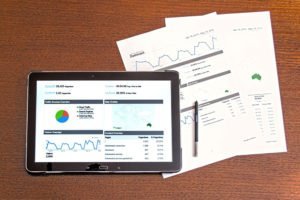 What happens when you put time, money, and resources into social media marketing without measuring and assessing the results? Well, then you’re playing a game where you don’t know if you’re going to win or lose and sometimes, you may just lose. Social media analytics are crucial for tracking the impact and reach of your brand. Otherwise, there is no real way of knowing if it’s helping you build your business. Using social analytics is especially important on the most used social platforms on the Internet.
What happens when you put time, money, and resources into social media marketing without measuring and assessing the results? Well, then you’re playing a game where you don’t know if you’re going to win or lose and sometimes, you may just lose. Social media analytics are crucial for tracking the impact and reach of your brand. Otherwise, there is no real way of knowing if it’s helping you build your business. Using social analytics is especially important on the most used social platforms on the Internet.
These include Facebook, Twitter, YouTube, Pinterest, Instagram, LinkedIn, Google+, and other notable social platforms. Using the internal metrics provided by these social channels, you can gauge performance, see how you can engage your audience further, optimize your strategy, and drive conversions.
Benefits of Paying Attention to Analytics
It’s no surprise that many businesses, especially e-commerce and B2C companies, are using social media as an important source of revenue. When used correctly, social analytics can be an incredibly useful guide for your business, one that can direct your social media marketing strategies.
Social analytics are important for decision making in terms of marketing, sales, reputation management, and overall business strategy. They indicate how customers and the target audience perceive your brand; including help identify areas where improvements can be made.
To sum it up, social media metrics can help:
- Create highly targeted content
- Save money on marketing
- Provide great customer service
- Measure ROI (return on investment)
- Optimize your online strategy
While there are many benefits of using social media metrics to understand how your business is doing, it must be noted that you won’t be getting quality data without a sound social media marketing strategy. It always comes down to how well you know your target audience and on which platforms you are likely going to find, as well as engage with them.
Goals for Monitoring Social Analytics
There can be one or more goals for measuring social media metrics. Goals can depend on the lifecycle of your business. However, in almost all business cases, social media analytics should help you accomplish the following three tasks:
- Evaluating what works, what doesn’t, and how you can adjust your communications, as well as engagements accordingly.
- Determining the ideal type of content and the subsequent platforms for that type of content based on past and present performance.
- Using the metrics to find out how successful your current social media strategies are and what value they brought to the business.
The best thing is that you can easily measure the performance of your social profiles using the analytics tools on the respective social networks. For example, Facebook has Facebook Insights, and Twitter has Twitter Analytics. Likewise, there’s LinkedIn and Pinterest (a popular image-based social platform) Analytics.
So you don’t need to use any additional tools or software to get analytics and generate time-based reports on your social media performance. That being said, there are some great tools like HootSuite, Social Baker, and Buffer that can help you gauge social media performance.
What to Measure?
You may read many articles and blogs claiming that you should measure everything from your social media. Well, you can, but then you’ll be scratching your head in confusion more than you’d like to. The most important thing about social media analytics is to understand what you are measuring.
Unless you figure out what numbers are relevant to your business, they are all meaningless. You can measure conversions, outreach, engagement, impressions, audience growth, visits, referral traffic, and bounce rate as part of your analytics. However, all these metrics may not be useful to your cause.
For example, if you have an online media business that is primarily image-based, then you’re going to have a high bounce rate, no question about that. But does that mean that your social audience doesn’t like what you’re doing? Not necessarily!
But if you have to keep a few metrics as essentials, those would be conversions, reach, and engagement. Conversions let you know who took the action that you desired. Reach tells you how many people saw your posts. Engagement informs you about how many people engaged with your posts (shares, comments, retweets, +1s).
Here’s where it can get a little confusing. Generally, most people new to social media marketing will focus on engagement more than they focus on reach but that may not be a good idea. The reason for this is because even if no one clicks on the like or share button, it doesn’t necessarily mean that they did not engage with your posts.
It is often better to focus on reach, rather than engagement. Think about it, why focus on engagement when a huge chunk of social media users don’t even take the seconds it takes to click the like button? If we take it back to marketing 101, we know that any form of marketing is primarily about reaching the right audience, so it should be the same for social.
For most businesses, the two primary success metrics should be reach and referral traffic (who is going to your website). You may wonder, why referral traffic? This is because your hard work shouldn’t be solely building someone else’s platform. You should only use it to amplify yours (your website).
Last but not least, remember that when it comes down to deciding what social metrics to monitor, it’s better to align things with your business goals. Have a clear vision and you’ll be able to drive decision-making, as well as improve your overall marketing strategy.
Social Media #Analytics 101Click To Tweet
I’m a freelance copywriter and SEO specialist. I aim to empower individuals and businesses with impactful marketing solutions and insights. In my downtime, I recharge by embracing the beauty of nature or cherishing moments with my loved ones. If you found value in this post, please consider sharing it.
Want a heads-up once a week whenever a new article drops?







